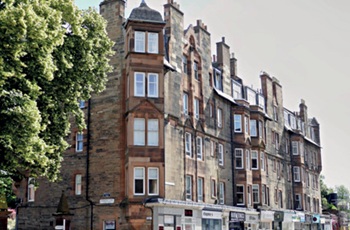Convection in buildings
Convection is the movement of a fluid, such as air. It is a combination of advection and diffusion:
- Advection is the large-scale motion of a fluid in currents.
- Diffusion is the small-scale movement of particles of fluid from areas of higher concentration to areas of lower concentration.
Convective air movement in buildings is very important to:
- Help moderate internal temperatures.
- Reduce the accumulation of moisture, odours and other gases that can build up during occupied periods.
- Improve the comfort of occupants.
Air movement in buildings can be 'forced' convection (for example driven by fans), or 'natural' (or free convection) resulting from pressure differences between one part of the building and another.
Natural air movement can be either wind driven, or buoyancy driven.
- Wind-driven air movement is caused by a difference in pressure between the inside and outside of the building caused by wind.
- Buoyancy-driven air movement is caused by the tendency for warm air to expand, and so become less dense and more buoyant, rising through the general air mass. Conversely cool air contracts, becoming more dense and less buoyant and falling through the air mass. This can create circulating currents of rising and falling air.
Convection is also a heat transfer mechanism (along with radiation, conduction and phase change). Convective heat transfer in buildings results from the movement of air of different temperatures and can be used to maintain internal comfort, either through heat exchange between the air and the internal surfaces of a building, or by heat exchange with sources of heating or cooling, sometimes driven by fans.
Convection can be noticeable above hot radiators where warm air rises, or next to windows where there may be a cold downdraught. These effects can be exploited at a larger scale in systems such as displacement ventilation, and in passive building design through effects such as the stack effect.
Accurately predicting the movement of air within building is extremely complicated and can require the use of computational fluid dynamics (CFD) modelling software. CFD works by dividing a body of air (or any other fluid) into a series of cells that represent the fluid volume surrounded by surfaces and openings that represent the enclosure. The software will then simulate the flow of air from each cell to those surrounding it, and the exchange of heat between the boundary surfaces and the cells adjacent to them. After a series of iterations, the model will come to a steady state that represents the actual air velocities and distribution of temperatures expected to be found within the space. See CFD for more information.
NB Fluids can also be used to transfer heat within a building by 'mass transfer', for example by the flow of a refrigerant, chilled water or hot water to provide heating or cooling.
NB AR5 Climate Change 2014: Impacts, Adaptation, and Vulnerability, Glossary, published by the Intergovernmental Panel on Climate Change (IPCC) defines convection as: ‘Vertical motion driven by buoyancy forces arising from static instability, usually caused by near-surface cooling or increases in salinity in the case of the ocean and near-surface warming or cloud-top radiative cooling in the case of the atmosphere. In the atmosphere, convection gives rise to cumulus clouds and precipitation and is effective at both scavenging and vertically transporting chemical species. In the ocean, convection can carry surface waters to deep within the ocean.’
[edit] Related articles on Designing Buildings
Featured articles and news
The history of building regulations
A story of belated action in response to crisis.
Moisture, fire safety and emerging trends in living walls
How wet is your wall?
Current policy explained and newly published consultation by the UK and Welsh Governments.
British architecture 1919–39. Book review.
Conservation of listed prefabs in Moseley.
Energy industry calls for urgent reform.
Heritage staff wellbeing at work survey.
A five minute introduction.
50th Golden anniversary ECA Edmundson apprentice award
Showcasing the very best electrotechnical and engineering services for half a century.
Welsh government consults on HRBs and reg changes
Seeking feedback on a new regulatory regime and a broad range of issues.
CIOB Client Guide (2nd edition) March 2025
Free download covering statutory dutyholder roles under the Building Safety Act and much more.
AI and automation in 3D modelling and spatial design
Can almost half of design development tasks be automated?
Minister quizzed, as responsibility transfers to MHCLG and BSR publishes new building control guidance.
UK environmental regulations reform 2025
Amid wider new approaches to ensure regulators and regulation support growth.
The maintenance challenge of tenements.
BSRIA Statutory Compliance Inspection Checklist
BG80/2025 now significantly updated to include requirements related to important changes in legislation.






















